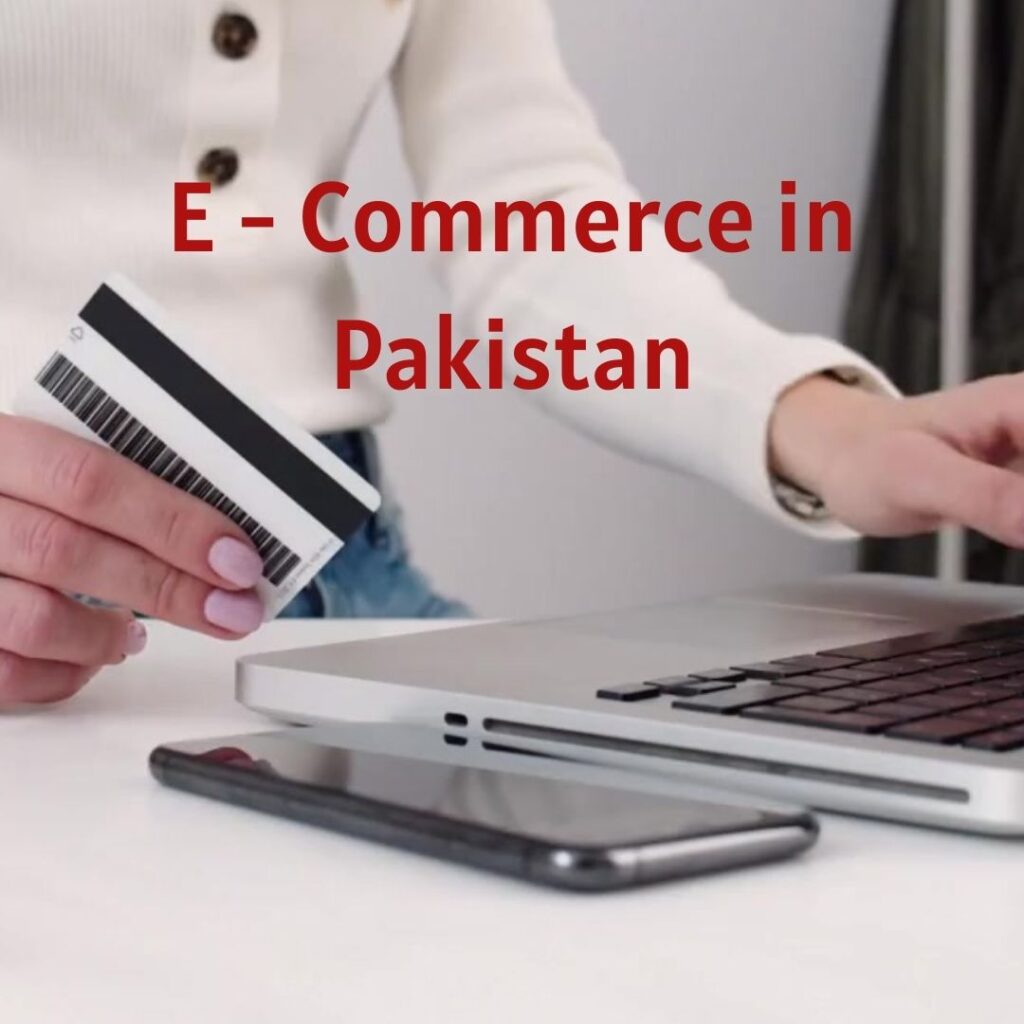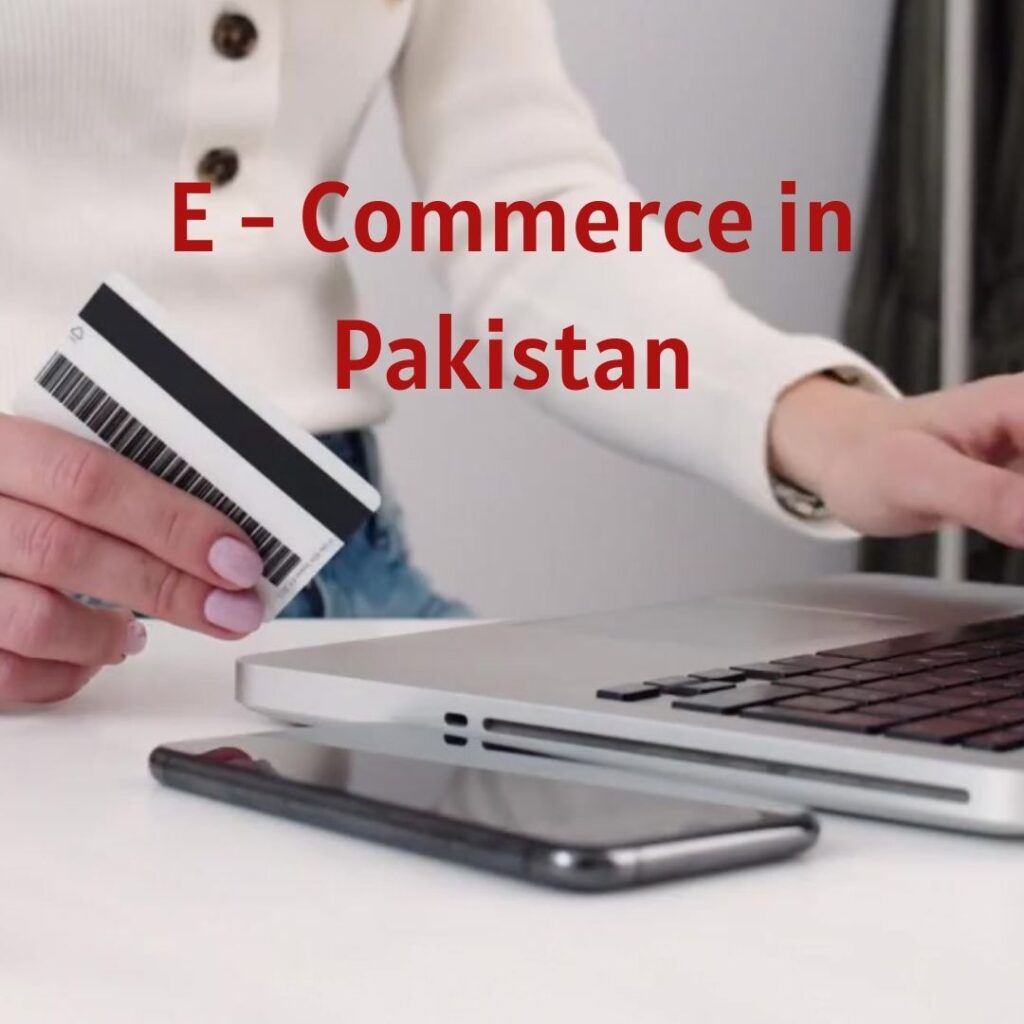
I. Introduction
A. Definition and Concept of E-Commerce
E-commerce, short for electronic commerce, refers to the buying and selling of goods and services using electronic platforms and the Internet. This includes online transactions, where customers can browse through product offerings, place orders, make payments, and complete their purchases without physically visiting brick-and-mortar stores.
B. Increasing importance in the digital age
In the digital age, e-commerce has emerged as a transformative force in the way businesses operate and the way consumers shop. It has revolutionized traditional retail models by providing shoppers with convenience, access, and a wider range of options. The spread of internet connectivity and the rise of smartphones has accelerated the adoption of e-commerce and made it an integral part of modern commerce.
C. Overview of the E-commerce Landscape in Pakistan
Pakistan’s e-commerce landscape has witnessed remarkable growth in recent years. With a population of over 220 million people, the country holds immense potential for e-commerce expansion. The rise in internet penetration, increased use of mobile devices, and the availability of digital payment solutions have contributed to the flourishing e-commerce ecosystem. Online marketplaces, individual online stores, and social media platforms are the primary channels through which e-commerce transactions occur.
Notable players like Daraz (owned by Alibaba Group) and local startups have played a pivotal role in shaping the market. These platforms offer a wide array of products ranging from electronics and fashion to groceries and household items. Moreover, various sectors of the economy, such as B2B wholesale trade and C2C resale markets, have also embraced e-commerce as a means of conducting business.
The e-commerce sector in Pakistan is characterized by its dynamic nature, rapid innovation and continuous emergence of new players. The government has taken steps to facilitate the growth of e-commerce, recognizing its potential to generate employment, increase consumer choice and contribute to economic growth. As the digital infrastructure continues to evolve and consumer behavior adapts, e-commerce in Pakistan is poised for further expansion.
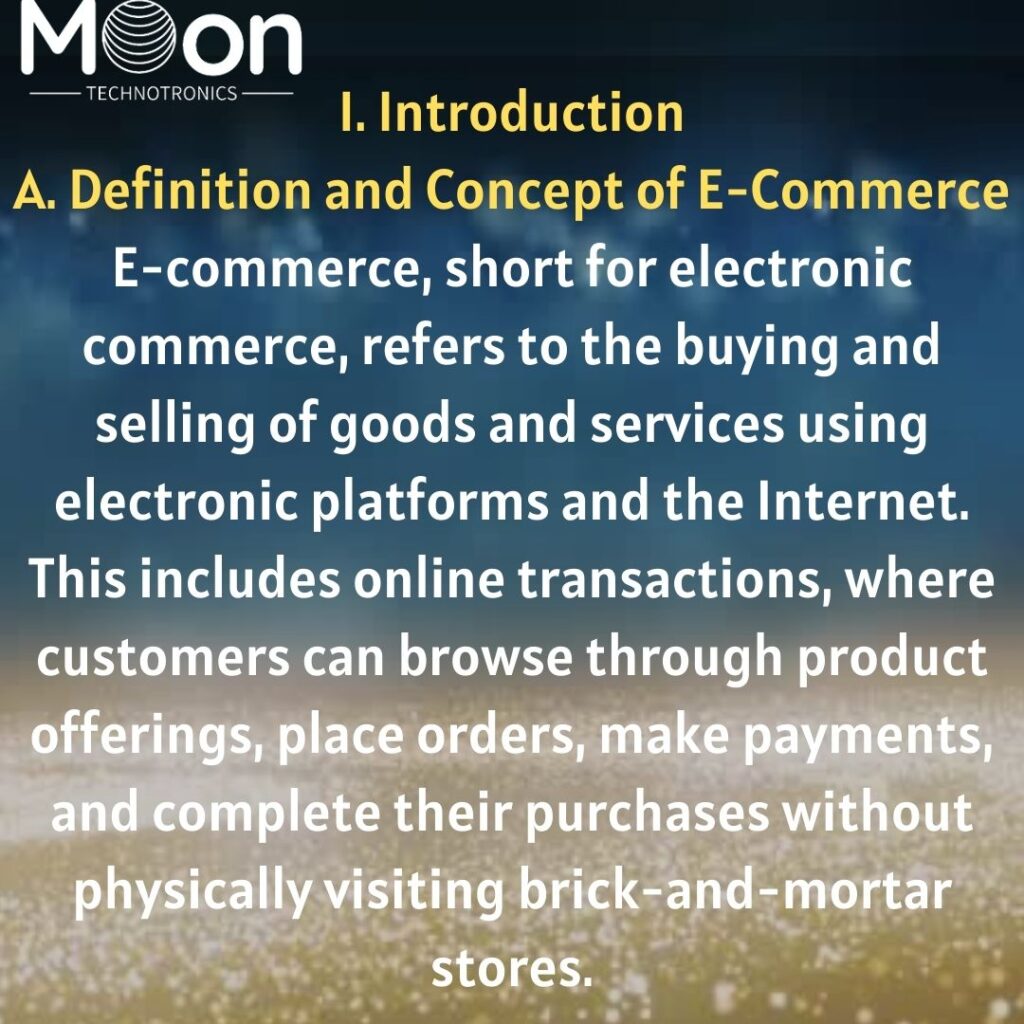
II Development Factors of E-Commerce in Pakistan
A. Increased Internet penetration and smartphone use
Internet penetration and smartphone usage has increased significantly in Pakistan, especially in urban and semi-urban areas. The availability of affordable smartphones and data plans has enabled a large segment of the population to access the Internet, creating a vast potential user base for e-commerce businesses. The convenience of browsing and shopping on mobile devices has fueled the growth of online shopping.
B. The rise of digital payment solutions
Adoption of digital payment solutions has played a significant role in the expansion of e-commerce in Pakistan. Traditional cash-on-delivery (COD) methods, which were the norm for online transactions, are gradually being replaced by digital payment options. Mobile wallets, payment gateways, and electronic funds transfer have made online transactions more secure and efficient. This shift has increased consumer confidence in online payments and laid the foundation for a cashless e-commerce ecosystem.
C. Improving logistics infrastructure
Logistical challenges have historically been a barrier to e-commerce growth in Pakistan. However, advances in logistics infrastructure, including last-mile delivery services and warehousing solutions, have eliminated some of these challenges. E-commerce businesses are partnering with logistics companies to ensure timely and reliable delivery to customers across the country. This enhanced logistics network has contributed to improved customer experiences and greater confidence in online shopping.
D. Government initiatives and policies supporting e-commerce
The Pakistani government has recognized the potential of e-commerce for economic growth and employment opportunities. As a result, various initiatives and policies have been introduced to facilitate the growth of the e-commerce sector. These measures include establishing a regulatory framework to ensure consumer protection, reducing taxes on digital products and services and promoting cross-border e-commerce trade. Such initiatives have created a more conducive environment for running and expanding e-commerce businesses.
Additionally, programs aimed at developing digital skills and entrepreneurship have encouraged individuals and small businesses to participate in the e-commerce ecosystem. By providing training and support, the government is nurturing a new generation of online entrepreneurs and contributing to diversifying the e-commerce landscape.
These growth factors reflect the transformation of Pakistan’s e-commerce sector as a whole. As the digital landscape continues to evolve and consumer behavior continues to evolve, the e-commerce industry in Pakistan is poised for sustained growth and innovation.
III Types of e-commerce models in Pakistan
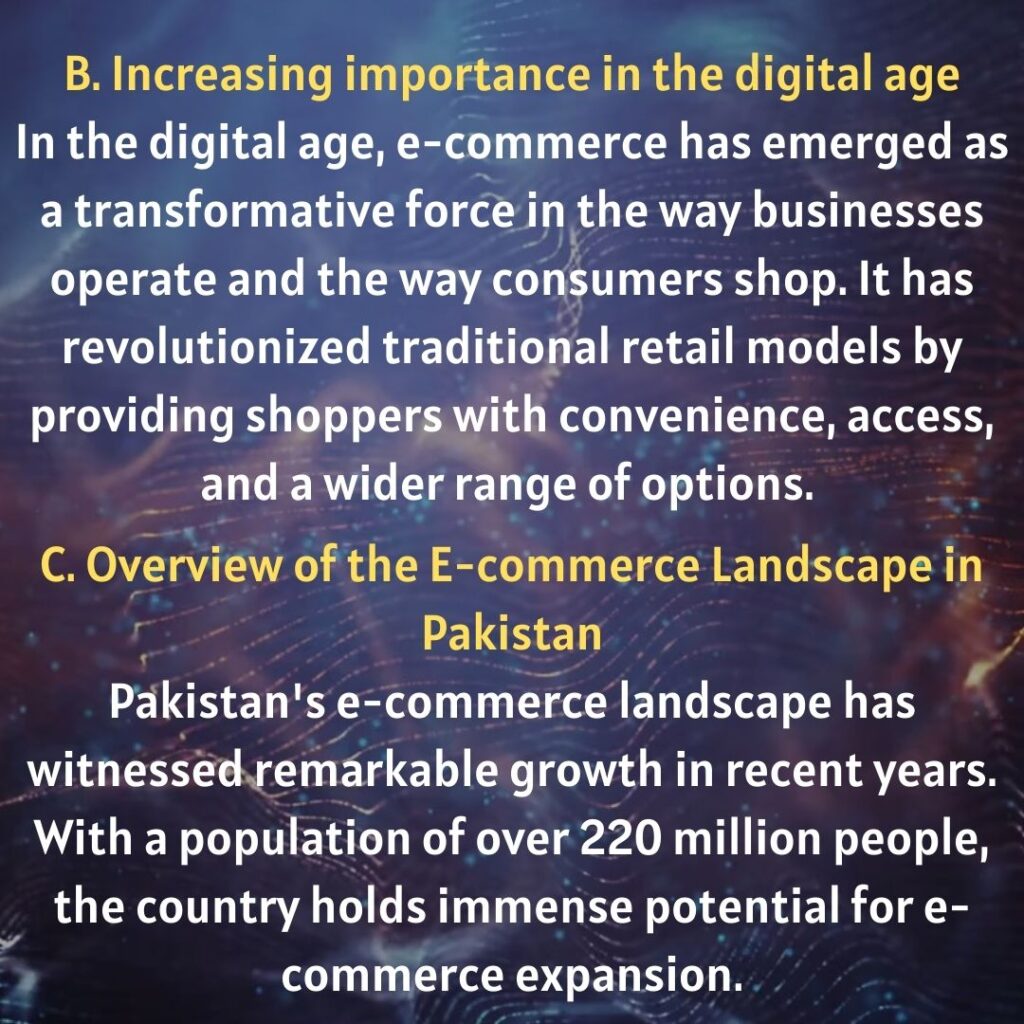
A. Business-to-consumer (B2C) e-commerce
Online Marketplaces and Retailers:
In the B2C e-commerce model, online marketplaces such as Daraz, Shopistan, and Telemart, as well as individual online retailers, act as intermediaries between businesses and consumers. These platforms offer a wide range of products from electronics and fashion to home goods and groceries. They provide a digital space for different sellers to showcase their products, enabling users to compare prices, read reviews and make purchases easily from their devices.
Benefits to consumers (convenience, variety):B2C e-commerce in Pakistan offers consumers the convenience of shopping from the comfort of their homes or on-the-go. The availability of a diverse range of products and brands on these platforms provides consumers with greater choices compared to traditional retail stores. Additionally, features like user reviews and ratings assist consumers in making informed purchasing decisions.
B. Consumer-to-Consumer (C2C) E-commerce
Role of Platforms like Daraz and OLX:
C2C e-commerce involves individuals selling products directly to other individuals through online platforms. In Pakistan, platforms like Daraz and OLX facilitate C2C transactions. Daraz, for example, allows individuals to become sellers and list their products, while OLX specializes in classified advertisements for various goods and services.
Empowering individual sellers:
C2C e-commerce empowers individual sellers, allowing them to earn income by selling their new or used items to a wider audience. This model encourages sustainability through the reuse and recycling of products. These platforms provide a platform for individuals to finish their homes, generate income and connect with potential buyers across the country.
C. Business-to-business (B2B) e-commerce
Growth in wholesale and industrial sectors:
B2B e-commerce involves transactions between businesses rather than consumers. In Pakistan, the B2B e-commerce sector has seen growth especially in the wholesale and industrial sectors. Online platforms have emerged to connect manufacturers, suppliers, distributors and retailers, streamline the procurement process and promote collaboration within the business ecosystem.
Streamlining Supply Chain Processes:
B2B e-commerce simplifies and accelerates supply chain processes by digitizing transactions, reducing paperwork, and enabling real-time communication between business partners. This model increases efficiency, lowers operational costs, and shortens the time required for order processing and fulfillment. It also opens opportunities for businesses to access a wider network of potential partners both locally and internationally.
These various e-commerce models have played an important role in diversifying Pakistan’s digital economy. They cater to different customer needs and market segments, ultimately driving the overall growth and evolution of the e-commerce industry in the country.
Major players in Pakistani e-commerce market
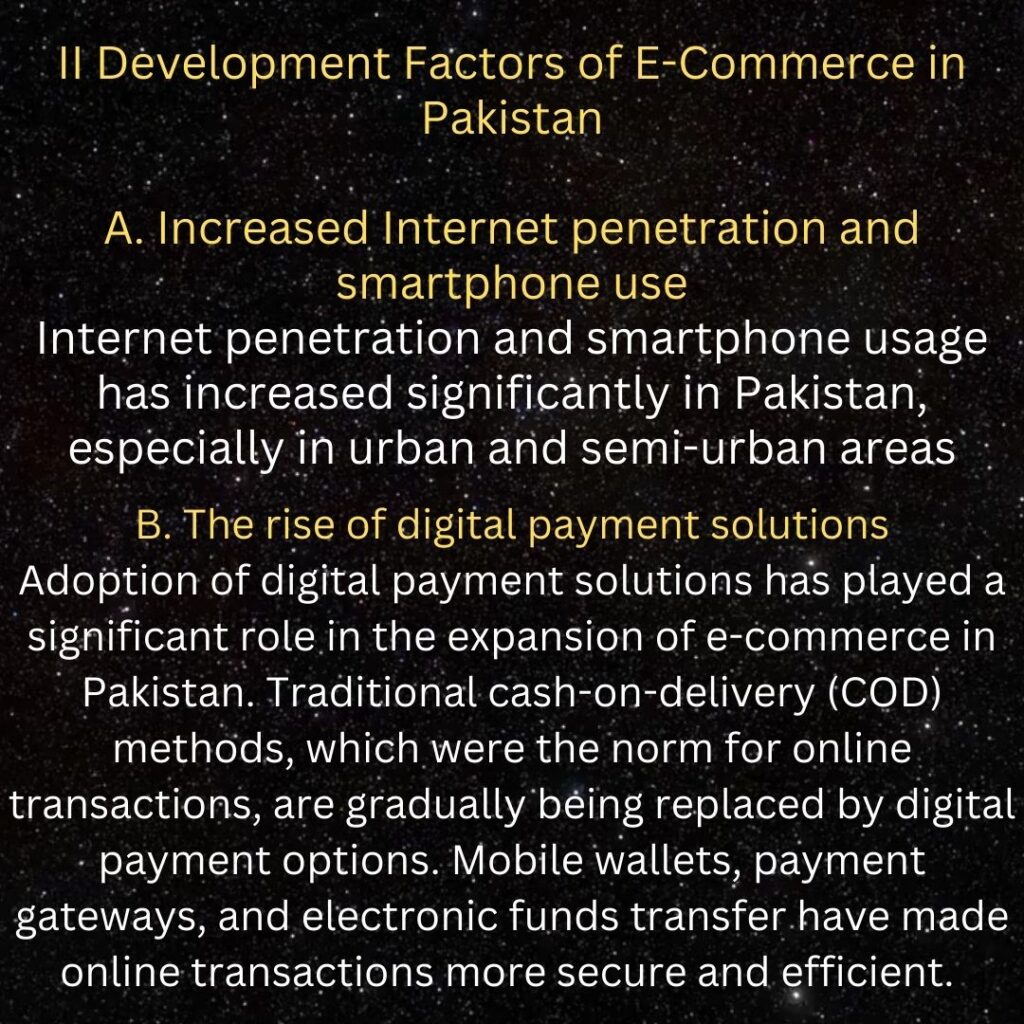
A. Drawer (Alibaba Group):
Daraz, owned by Alibaba Group, is one of the most prominent and important e-commerce platforms in Pakistan. It serves as a comprehensive online marketplace, offering a wide variety of products from electronics and fashion to home goods and beauty products. Daraz has played a significant role in shaping the e-commerce landscape in Pakistan and has played its role in consumer adoption of online shopping.
B. Shopistan:
Shopistan is a Pakistani e-commerce platform that focuses on enabling businesses to set up their online stores. It provides entrepreneurs and small businesses with the tools and technology to create their digital storefronts and sell products online. Shopistan’s emphasis on empowering local businesses has contributed to the growth of e-commerce in Pakistan by making it easier for small enterprises to establish their online presence.
C. Telemart:
Telemart is another notable player in the Pakistani e-commerce scene. It offers a wide range of products, including electronics, mobile phones, fashion items, and more. Telemart is known for its customer-centric approach and has gained popularity for providing a reliable online shopping experience with a strong emphasis on customer service.
D. Yayvo (TCS):
Yayvo, backed by the TCS logistics company, is a significant player in Pakistan’s e-commerce ecosystem. It offers a diverse range of products and has leveraged TCS’s logistical expertise to provide efficient and timely delivery services to customers across the country. Yayvo’s integration with TCS’s wide network has contributed to enhancing last-mile delivery capabilities.
E. Emerging Startups and Niche Players:
Pakistan’s e-commerce landscape is also witnessing the emergence of various startups and niche players catering to specific market segments. These startups often focus on specialized products or unique business models. For instance, there are platforms specializing in fashion, beauty, electronics, groceries, and more. These niche players contribute to the diversity and innovation within the e-commerce ecosystem.
These major players, along with emerging startups and niche players, collectively contribute to the growth and competitiveness of Pakistan’s e-commerce market. Their diverse offerings, innovative approaches, and strategic partnerships have shaped the industry and continue to drive its evolution in the country.
V. Challenges and Opportunities in Pakistani E-commerce
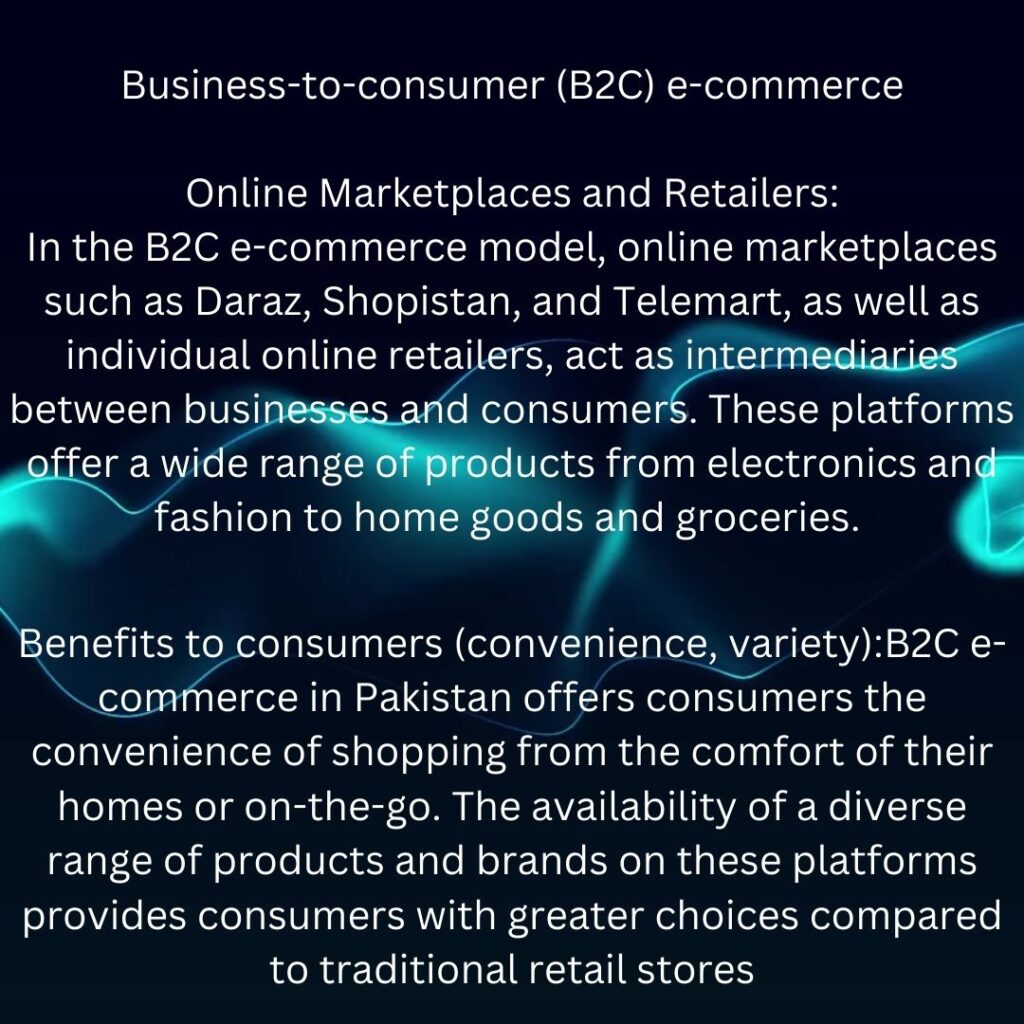
A. Payment Gateway Challenges and Solutions:
Challenges: One of the challenges in the Pakistani e-commerce landscape is the limited availability and adoption of secure and convenient payment gateways. Many consumers still prefer cash-on-delivery due to concerns about online payment security and lack of awareness about digital payment options.
Solutions: E-commerce businesses are working to address these challenges by partnering with trusted payment gateways, promoting digital literacy about safe online transactions, and offering incentives such as discounts for using digital payment methods. Government and financial institutions’ initiatives to enhance digital payment infrastructure also contribute to tackling this challenge.
B. Trust and Security Concerns for Online Transactions:
Challenges: Building trust among consumers for online transactions is crucial. Concerns related to data privacy, online fraud, and counterfeit products can deter potential customers from making online purchases.
Solutions: E-commerce platforms are implementing robust security measures, including secure checkout processes, data encryption, and customer verification mechanisms. Displaying customer reviews and ratings, providing clear return policies, and offering reliable customer support can enhance trust. Raising awareness about safe online practices and educating consumers about their rights in online transactions are important steps in addressing these concerns.
C. Last-mile Delivery Challenges and Innovations:
Challenges: Efficient last-mile delivery to remote or densely populated areas remains a challenge due to inadequate infrastructure, traffic congestion, and unreliable addresses.
Solutions: E-commerce companies are investing in advanced logistics technology, such as route optimization software and tracking systems, to streamline deliveries. Partnerships with local courier services and leveraging crowd-sourced delivery networks are also being explored. Additionally, innovative concepts like locker pickup points and drone deliveries hold the potential to overcome last-mile challenges in the long run.
D. Competition with Traditional Retail:
Challenges: Traditional retail still holds a significant share of consumer spending in Pakistan. Convincing consumers to shift from their accustomed shopping habits to online channels can be a challenge.
Opportunities: E-commerce offers advantages like convenience, a wider product range, and cost-effective deals that traditional retail might struggle to match. Businesses can leverage these benefits to attract customers and create loyalty. Providing seamless online-to-offline experiences, such as click-and-collect options, can bridge the gap between e-commerce and traditional retail.
E. Potential for Rural E-commerce Growth:
Challenges: Rural areas face challenges like limited internet access, digital illiteracy, and lower purchasing power.
Opportunities: The rural population presents an untapped market with significant growth potential. Initiatives to improve internet connectivity, digital literacy programs, and partnerships with local businesses can help extend e-commerce’s reach to rural areas. Tailoring product offerings to meet rural needs and preferences can also drive growth.
The challenges in the Pakistani e-commerce landscape present opportunities for innovation and growth. By addressing these challenges strategically, e-commerce businesses can create a more inclusive and dynamic online shopping ecosystem that benefits both consumers and the economy.
VI. Consumer Behavior and Trends in Pakistani E-commerce
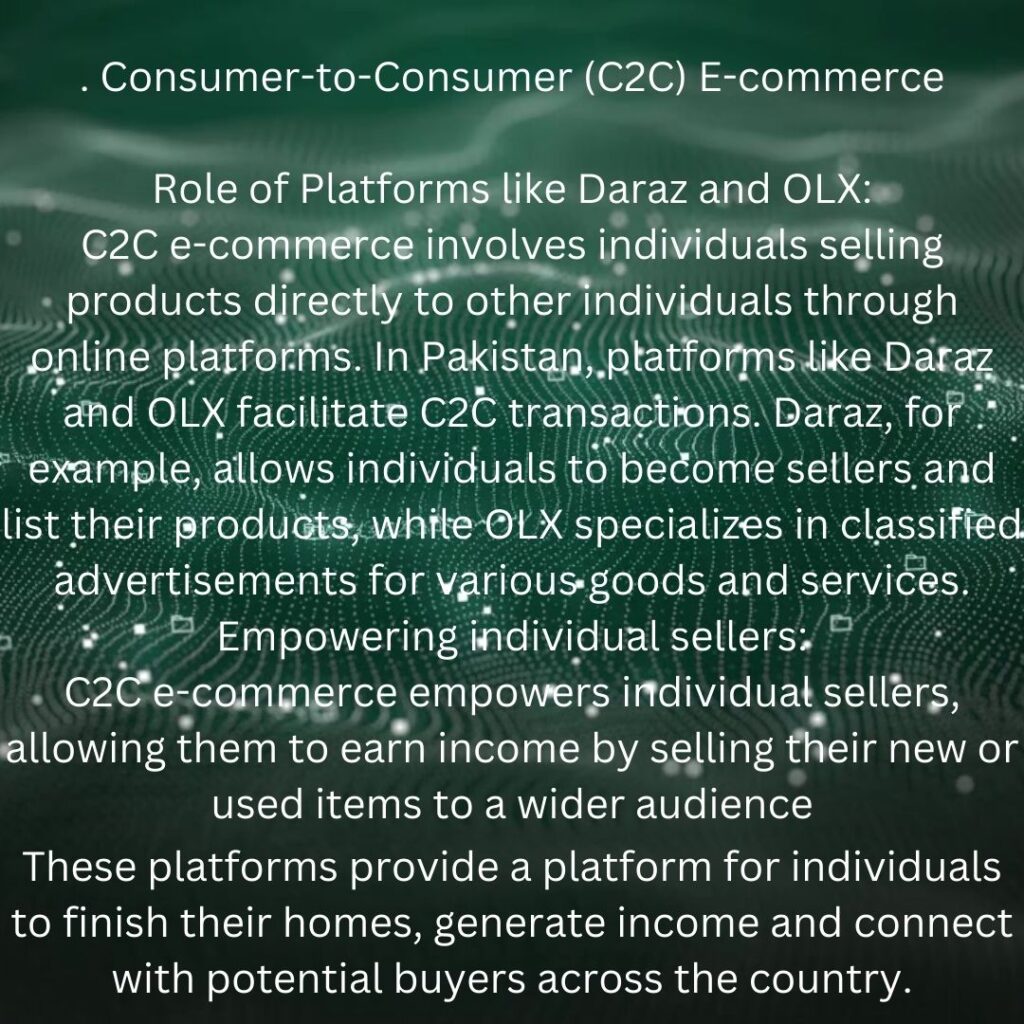
A. Shift towards Online Shopping Habits:
Shift in Behavior: There has been a noticeable shift in consumer behavior as more individuals are embracing online shopping. This change is attributed to factors such as convenience, wider product selection, and the availability of exclusive online deals.
Reasons for Shift: The convenience of browsing and shopping from anywhere, anytime, coupled with the ability to compare prices and read reviews, has enticed consumers to transition from traditional retail to online platforms.
B. Preference for Cash-on-Delivery vs. Digital Payments:
Cash-on-Delivery (COD) Tradition: Cash-on-delivery has been the preferred payment method for many Pakistani consumers due to concerns about online payment security, digital literacy, and a comfort level with paying in cash upon receiving the goods.
Shifting towards Digital Payments: While COD is still prevalent, there is a gradual shift towards digital payment methods. The rise of digital wallets, secure payment gateways, and increased awareness about online security are encouraging consumers to adopt digital payments for their transactions.
C. Impact of Social Media on Purchasing Decisions:
Influence of Social Media: Social media platforms, such as Facebook, Instagram, and TikTok, have a significant impact on consumers’ purchasing decisions. Businesses leverage these platforms to showcase products, run targeted advertisements, and engage with potential customers.
Social Commerce: The concept of “social commerce” is gaining traction, where consumers can directly purchase products within social media apps. Influencer marketing and user-generated content also play a role in shaping consumers’ perceptions and choices.
D. Rise of M-commerce (Mobile Commerce):
Mobile Revolution: The widespread use of smartphones has led to the rise of mobile commerce (m-commerce). Consumers increasingly use their mobile devices to browse products, compare prices, and make purchases.
Responsive Platforms: E-commerce businesses are adapting to this trend by creating mobile-responsive websites and developing dedicated mobile apps. These platforms offer optimized user experiences, easy navigation, and seamless checkout processes, catering to the preferences of mobile shoppers.
Consumer behavior and trends in Pakistani e-commerce reflect the changing dynamics of the digital landscape. As consumers become more tech-savvy and as businesses continue to innovate, the e-commerce industry is likely to witness further transformation in how products are marketed, purchased, and delivered.
VII Future Prospects and Innovations in Pakistani E-Commerce

A. Integration of Augmented Reality (AR) and Virtual Reality (VR):
Better shopping experience: AR and VR technologies have the potential to revolutionize online shopping by providing immersive experiences. Consumers can virtually try on clothes, visualize furniture in their homes, and experience products before purchasing.
Engaging shoppers: By enabling consumers to interact with products in a virtual environment, AR and VR can reduce uncertainty in online purchases, increase engagement, and create memorable shopping experiences. are, thus increasing conversion rates.
B. Artificial Intelligence (AI) for Personalized Shopping Experiences:
Personalized recommendations: AI algorithms can analyze customer behavior and preferences to make tailored product recommendations. This increases customer engagement and increases the likelihood of making a purchase.
Chatbots and Customer Service: AI-powered chatbots can provide real-time customer support, answer questions and help with order-related issues. It streamlines customer service and contributes to a smooth shopping journey.
C. Voice Commerce and Smart Assistant:
Voice-enabled shopping: Voice commerce, powered by smart speakers and virtual assistants, enables consumers to make purchases using voice commands. This trend simplifies the shopping process and caters to multitasking consumers.
Integration of AI assistants: Integrating e-commerce platforms with AI-powered virtual assistants allows for hands-free shopping, information retrieval, and even product comparison through natural language interaction.
D. Sustainable and Eco-Friendly E-Commerce Practices:
Environmental awareness: As sustainability has become a global concern, e-commerce businesses are exploring environmentally friendly practices, such as minimizing packaging waste, promoting reusable products, and energy-efficient logistics. to adoptEthical consumerism: Consumers are increasingly considering the environmental impact of their purchases. E-commerce platforms that prioritize sustainability can attract conscious consumers and contribute to positive brand perception.
These future prospects and innovations represent the evolution of Pakistani e-commerce towards a more dynamic and consumer-centric industry. By embracing emerging technologies and incorporating sustainable practices, the e-commerce landscape in Pakistan has the potential to provide better shopping experiences while contributing to economic and environmental well-being.
VIII Case Study: Pakistani E-Commerce Business Success Story
A. Business Model Overview:
Company Name: PakFashion.com
Business Model: PakFashion.com is an online fashion and lifestyle e-commerce platform focused on promoting Pakistani designers and brands. The platform connects fashion enthusiasts with a variety of apparel, accessories and lifestyle products that showcase Pakistan’s rich cultural heritage.
Unique Selling Proposition (USP): PakFashion.com exclusively supports local artisans, designers and small businesses by showcasing locally produced and designed products. It emphasizes the fusion of traditional aesthetics with modern trends, catering to both domestic and international markets.
B. Strategies Employed for Growth:
Curated Selection: PakFashion.com carefully curates its product offerings, collaborating with a network of local designers to ensure high-quality and unique items that reflect Pakistan’s cultural diversity.
Engaging Content: The platform invests in creating engaging and informative content about fashion trends, styling tips, and the stories behind the products. This content helps educate consumers and build a sense of community around the brand.
Customer Experience: Focus on providing exceptional customer service, hassle-free returns, and transparent communication with customers to build trust and loyalty.
Partnerships: Collaborations with fashion events, influencers, and fashion shows to increase brand visibility and connect with the target audience.
Localization: Offering multiple payment options, local languages, and catering to specific cultural preferences to enhance the shopping experience for diverse audiences.
C. Lessons Learned and Impact on the Industry:
Localized Focus: PakFashion.com’s success underscores the importance of catering to local tastes, supporting local artisans, and promoting domestic brands. This has inspired other e-commerce businesses to embrace local products and craftsmanship.
Content and Community: The emphasis on engaging content and building a community around the brand has set a precedent for e-commerce platforms in Pakistan to not only sell products but also provide value to customers through informative and inspiring content.
Ethical and Sustainable Fashion: The platform’s focus on supporting local designers and brands aligns with the growing interest in ethical and sustainable fashion. This success story has encouraged other e-commerce businesses to adopt similar models and practices.
Industry Impact: PakFashion.com’s success has contributed to the diversification of the e-commerce landscape in Pakistan, showing that a niche approach that celebrates local culture and craftsmanship can resonate with consumers.
In summary, the success of PakFashion.com serves as a testament to the potential of e-commerce platforms that prioritize local culture, quality, and community engagement. It has not only carved a unique space for itself in the industry but has also influenced the way e-commerce businesses approach branding, content, and the promotion of local products.
IX. Regulatory and Legal Framework in Pakistani E-commerce
A. Digital Taxation and Sales Tax Implications:
Digital Taxation: The taxation of digital services and transactions has become a significant concern for governments globally. In Pakistan, there have been efforts to introduce digital taxation to ensure that e-commerce businesses contribute to the country’s tax revenue.
Sales Tax: E-commerce businesses are subject to sales tax regulations, which vary based on the nature of the transaction and the value of goods or services being sold. Sales tax implications can differ between different provinces, leading to complexity in compliance for businesses operating nationwide.
B. Intellectual Property Rights in E-commerce:
Counterfeiting and Infringement: E-commerce platforms sometimes face challenges related to the sale of counterfeit or infringing products. Protecting intellectual property rights (IPR) is crucial to maintain consumer trust and support genuine businesses.
IPR Enforcement: Pakistani e-commerce businesses must be vigilant in monitoring their platforms for potentially infringing products and taking prompt action to remove such listings. Moreover, they need to ensure that their own products and content are adequately protected through trademarks, copyrights, and patents.
C. Consumer Protection Laws and Online Disputes:
Consumer Protection: The online marketplace introduces new dimensions to consumer protection concerns, such as misrepresentation of products, delayed deliveries, and fraudulent practices. Consumers need to be assured of their rights and recourse in case of issues.
E-commerce Regulations: The government of Pakistan has introduced the Electronic Transactions Ordinance, 2002, which provides a legal framework for e-commerce transactions and digital signatures. Additionally, the Competition Act, 2010, addresses anti-competitive practices in the e-commerce sector.
Dispute Resolution: E-commerce platforms often implement mechanisms for handling consumer disputes, including customer service, return policies, and refund processes. The legal framework also accommodates alternative dispute resolution mechanisms, such as mediation and arbitration.
Navigating the regulatory and legal landscape is essential for e-commerce businesses in Pakistan. Adhering to tax obligations, safeguarding intellectual property, and ensuring consumer protection not only demonstrate a commitment to ethical business practices but also help maintain a favorable business environment and build trust with customers.
X. Conclusion

A. Summary of the Impact of E-Commerce on the Economy of Pakistan:
E-commerce has emerged as a transformative force in Pakistan’s economy, driving significant changes in consumer behavior, business models and technological innovation. It has increased market access for businesses, created employment opportunities, and contributed to economic growth. The convenience, choice and access offered by e-commerce has empowered consumers and transformed the retail landscape.
B. Emphasis on continuous development and adaptation:
The dynamic nature of the e-commerce sector requires businesses to be agile, adaptable and innovative. Staying updated with technological advances, understanding evolving consumer preferences, and responding to regulatory changes are critical to continued success. E-commerce players must continue to invest in logistics, customer experience, and emerging technologies to meet changing market demands.
C. Role of E-Commerce in Shaping Pakistan’s Digital Future:
E-commerce is at the forefront of Pakistan’s digital transformation journey. It is not only changing the way people shop, but also influencing how businesses operate, how jobs are created, and how technology is used. As Internet penetration deepens, connectivity improves, and digital literacy increases, e-commerce will play a central role in bridging the digital divide and extending economic opportunity to a wider population.
E-commerce is not just a commercial endeavor. It is a catalyst for digital empowerment and economic inclusion. The growth of the industry is in line with Pakistan’s vision of becoming a digitally connected nation, where innovation, entrepreneurship and technology together shape a more prosperous and sustainable future.
Finally, the rise of e-commerce in Pakistan is a testament to the power of technology and innovation in driving economic growth. As the sector evolves, it will continue to shape the way businesses are conducted, products sold and communities connected. By harnessing the potential of e-commerce while addressing the challenges responsibly, Pakistan is poised to open new horizons of economic growth and digital development.

